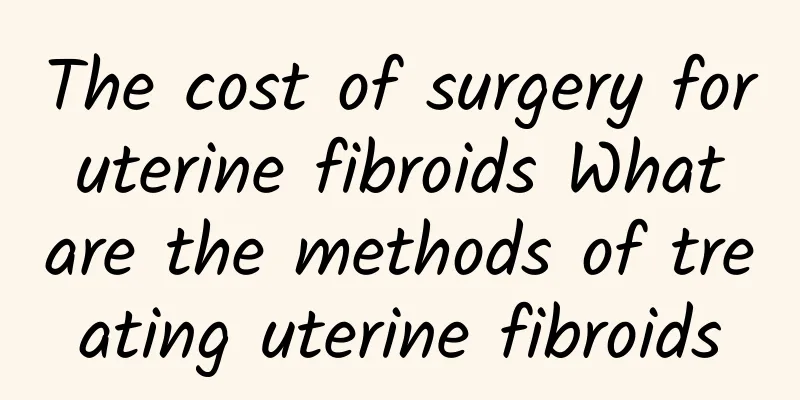What are the characteristics of endometriosis?

|
Endometriosis refers to the symptoms of endometrium malposition and movement to other parts of the body. Many patients with endometriosis do not fully understand its clinical manifestations. Please read below for the main clinical manifestations of endometriosis symptoms to facilitate diagnosis. 1. Dysmenorrhea and chronic lower abdominal pain: Patients are characterized by secondary and progressive dysmenorrhea, mainly with distending pain in the lower abdomen and anus, which may start 1 to 2 days before menstruation and disappear after menstruation. 2. Menstrual disorders: Patients with endometriosis may experience increased menstrual flow, prolonged menstrual periods or spotting. This is because the ovaries are destroyed by ectopic cysts, or the ovaries are wrapped by adhesions, resulting in ovarian dysfunction and causing menstrual disorders. 3. Infertility: Endometriosis patients often suffer from infertility, which has become one of the important causes of infertility. 4. Pain during sexual intercourse: Both endometriosis patients often complain of pain during sexual intercourse. It is mostly caused by mechanical stimulation. Endometriosis occurring in the rectouterine pouch and vaginal rectal septum causes swelling and fibrosis of the surrounding tissues, which causes the uterus to contract and rise during sexual intercourse, causing pain. 5. Intestinal symptoms: If the endometriosis lesions are located in the rectouterine pouch and near the rectum, during the menstrual period, the lesions will become congested and edematous, irritating the rectum and causing anal swelling, frequent or painful defecation, and constipation or diarrhea may also occur. 6. Urinary tract symptoms: If the endometriosis lesions are located in the bladder and ureters, the patient may have periodic frequent urination, dysuria and hematuria. 7. Symptoms of endometriosis in other parts of the body: If endometriosis implants and grows in other parts of the body, periodic pain, bleeding and enlarged masses will occur in the affected area, such as when the lesions occur in the umbilicus, abdominal wall wounds and vulva. If the lesions involve the lungs, pleura or diaphragmatic pleura, menstrual pneumothorax will occur repeatedly during menstruation. If the lesions involve the lung parenchyma, premenstrual hemoptysis, dyspnea and/or chest pain may occur. |
<<: Why is endometriosis prone to recurrence?
>>: Complications of endometriosis
Recommend
Weight loss plan! Do this in winter ~ the more you do, the thinner you will be
So troubled! Why do other people lose weight when...
What to do if you have threatened miscarriage one month into pregnancy
What should I do if I have threatened miscarriage...
The correct method should be used to care for patients with cervical hypertrophy
Cervical hypertrophy is a disease that can be ser...
A 23-year-old woman was diagnosed with vulvar cancer! Her "bad habits" are a wake-up call for everyone! It's worth learning from
"Doctor, I'm only 23 years old, how come...
What are the symptoms of cervical erosion in women? Symptoms of cervical erosion in two degrees
Cervical erosion is a gynecological disease with ...
What are the causes of cervical hypertrophy?
Cervical hypertrophy is a common gynecological di...
Do you have a thorough understanding of the causes of irregular menstruation?
Do you have a thorough understanding of the cause...
What is the cause of the right ovarian cyst? What should women do?
The formation of right ovarian cysts may be cause...
Do uterine fibroids affect life expectancy?
Does uterine fibroids affect life expectancy? Ute...
The key to defeating the weight loss plateau is "this"! Nutritionist Xie Furu: 6 dietary principles to improve basal metabolism
Many people who are trying to lose weight have ha...
Causes of cervical warts
Cervical warts are a common gynecological disease...
What is the main cause of cervical hypertrophy?
What are the causes of cervical hypertrophy? Cerv...
What causes endometriosis?
Endometriosis may be caused by genetic factors, b...
Prevention of adnexitis is the most important thing
Adnexitis is a disease that we often see in our l...
A brief discussion on the prevention and care of cervical erosion
Cervical erosion is a common disease among female...









